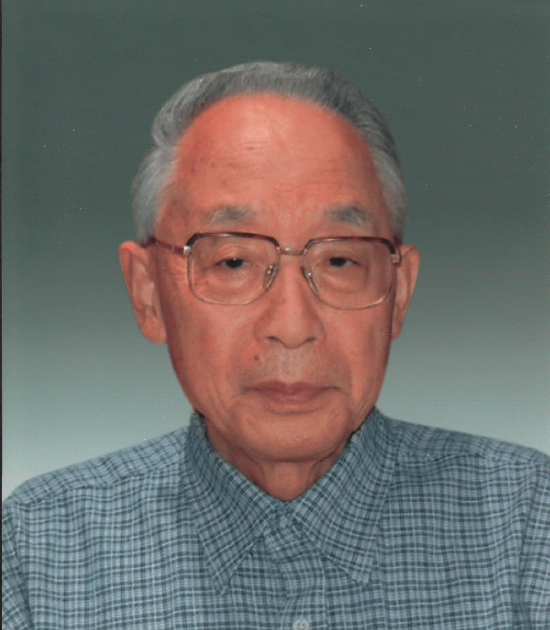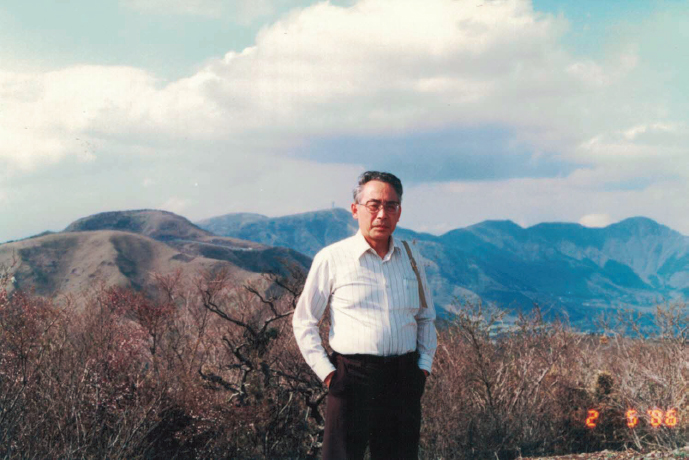MAKOTO KIKUCHI (菊 池 誠)
1925–2012
Elected in 1987
“For pioneering contributions to research on semiconductor devices, and for leadership in introducing advanced semiconductor work into Japanese industry.”
BY RUSSELL D. DUPUIS
MAKOTO KIKUCHI was born in Tokyo on December 6, 1925, and died, at age 86, on November 6, 2012. His father, Toyosaburo Kikuchi, was vice minister in the Ministry of Education and became president of Yokohama Municipal University. His mother often took her young son—at his request—to the National Science Museum in Ueno; as he explained, “I was extremely interested in the activities of scientists—not the science itself…. The most interesting thing for me was what the scientists were doing: experimenting, thinking, making some failures, and finally getting to [a] more correct understanding of the nature of things…. That is not only the fundamental activity of scientists but the fundamental activity of human beings.” 1
In Kikuchi’s early education, he focused on literature, philosophy (including Goethe, Kant, and Hegel), and European art. In middle and high school, he learned to read German and French. During World War II, his family had to move twice because their home was destroyed by bombings.
___________________
1 This and other quotations are from an oral history conducted May 27, 1994, by William Aspray, IEEE History Center, Piscataway, NJ, USA (https://ethw.org/Oral-History:Makoto_Kikuchi). The IEEE History Center has a collection of more than 800 oral histories in electrical and computer technology which can be accessed via http://ethw.org/Oral-History:List_of_all_Oral_Histories.
Food became scarce, but the family survived and he continued his education after the war.
He entered the University of Tokyo in 1945 to study physics. After graduating in April 1948, he took a research position in the newly established physics department of the Ministry of International Trade and Industry’s Electrotechnical Laboratory (ETL) (now the National Institute of Advanced Industrial Science and Technology) and devoted himself to semiconductor research—an area that experienced a dramatic upswing after the announcement that same year of the invention of the transistor.
The scientists at ETL learned of the demonstration of the transistor from General Douglas MacArthur’s headquarters and from the July 12, 1948, issue of Time magazine. A small group of about 10 researchers and technicians formed to begin investigations of the exciting new device. Although their work was hampered by the unavailability of pure semiconductors (e.g., germanium [Ge] and silicon [Si]), availability of only basic electronic equipment, and very limited access to technical articles describing the rapid developments in transistor technology, the highly motivated group persevered to educate themselves. Eventually Kikuchi developed a process for the creation of point-contact transistors, first with Si and then with Ge.
In 1960, invited by Jerome Wiesner (NAE 1966, NAS 1960), he was a visiting scientist in the research laboratory for electronics at the Massachusetts Institute of Technology. There he had better access to the latest publications on transistors and electronics and also began to take notice of the differences in how research organizations worked in the United States compared to Japan. During his many subsequent US trips (almost every year), he visited industrial electronics labs such as those at General Electric, RCA, and Bell Telephone Laboratories. During one such visit to Palo Alto, William Shockley offered him a position in his company; Kikuchi declined because he wanted to devote his efforts to improving the competitiveness of the electronics industry in Japan.
He eventually became a research manager at ETL but found the bureaucracy at the government laboratory more and
more oppressive (as he put it, “Bureaucracy [is] the enemy of research activity.”). Also, he enjoyed the technical interactions with his research teams, which was more than management typically had with their teams at ETL. And finally, after 26 years working for the government, he wanted to broaden his experience to gain a new viewpoint with a greater range of ideas.
In 1974 he resigned from ETL and joined Sony Corporation—after being aggressively recruited by its president and cofounder, Masaru Ibuka (NAE 1976). As director of the central research laboratory Kikuchi was exhilarated by the company’s dynamic technology environment and rapid decision making, led by Ibuka and Sony’s other cofounder, vice president Akio Morita. For example, when Kikuchi wanted to develop the ion implantation process for silicon devices at Sony he needed approval for the purchase of equipment at a cost of about ¥100 million. He explained the need for the investment in a 17-minute exchange with Ibuka and Morita and it was approved on the spot.
Kikuchi was also instrumental in Sony’s development of the silicon charge-coupled device (CCD). After he and his research team greatly improved the CCD performance, he was instructed by Kazuo Iwama, the new vice president of Sony, to transfer the project from the research lab to production at the company’s Atsugi factory. Although Kikuchi initially questioned the transfer of the technology he and his staff had painstakingly nurtured, this turned out to be the right move as it became very successful for Sony and its CCD-based digital cameras and professional video systems.
In addition, Kikuchi championed the company’s development of III-V compound semiconductor materials and devices. He made the early choice to focus III-V materials development on metalorganic chemical vapor deposition (MOCVD) for compound semiconductor device production.
In 1984, after many years fostering the development of key technologies, including the semiconductor laser for the compact versatile disk (DVD), Kikuchi became managing director of Sony. In this role he recognized that managers needed
to appreciate the technological importance of both revolution and evolution, that the “maturing of technology…[was] far more important than simply product development.”
Then in 1990 he expanded his influence and experience as a professor in the Faculty of Technology at Tokai University, where he was designated in 2000 an honorary visiting professor, as he continued work with Sony as executive technical advisor and director of the Sony Education Foundation.
Besides many technical papers, he authored Story of Semiconductors—Physics and Applications (NHK Books, 1967), Japanese Electronics—A Worm’s Eye View of Its Evolution (International Specialized Book Services, 1st ed., 1983; Simul International, transl.), Japanese Semiconductors—Its 40 Years (Chuko-Shinsho Publishing Co. Ltd., 1992), and Semiconductors and Semiconductor Theory and Application—Half a Century History (Shokabo Co. Ltd.). He also wrote a number of essays, such as “My Friends, Let’s Talk about Science for the Future of the Younger Generation” (Kogaku-Tosho Publishing Co. Ltd., 2003).
In addition to his election to the NAE as a foreign member in 1987, he received the Kanagawa Culture Award in 1994. The award is presented to individuals (or groups) whose remarkable achievements have contributed to the improvement and development of the prefecture’s culture.
Kikuchi was a pioneer of the semiconductor industry in Japan and his contributions to physics, technology, and the management of technology are still felt today. He is well known in Japan, Europe, and the United States for his efforts to improve worldwide technical interactions through international exchanges and to deepen relationships by fostering communication and collaborations and through educational activities. He had many friends throughout the world who remember his warm personality and technical insights.
He is survived by son Tsuneo Kikuchi. His wife Taeko Kikuchi died in 2016, and a younger son, Hiromi, died in 2019.








